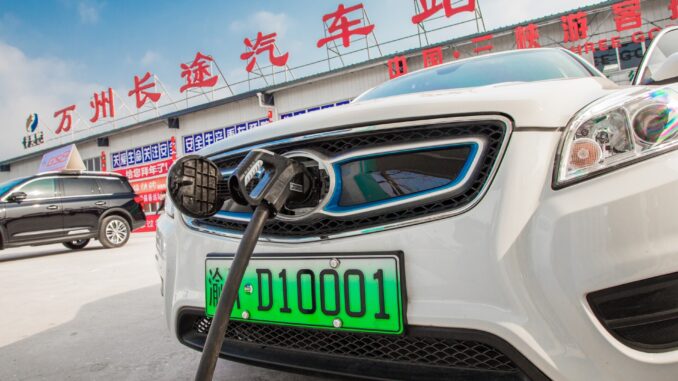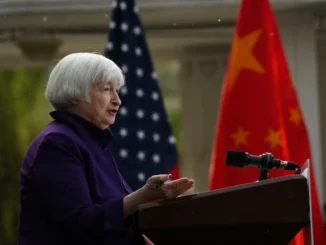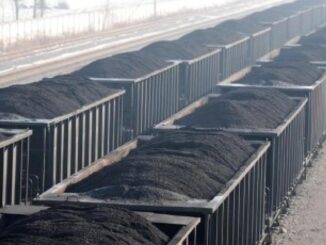
It seems like oil ministers, analysts, and oil company executives were only yesterday reveling in China’s opening and the return of a strongly bullish oil market. Eight months later, the crude market is struggling to reach and remain at the mid-$80 price that prevailed in January. China’s economic growth has slowed. By the end of the year, the nation will likely be in recession, although only a few daring economists have issued such projections. The country’s economy is shrinking and will continue to slow. Chinese consumption of oil and other commodities will drop in concert. Worse for oil, China will push hard to maintain certain industries, particularly its electric vehicle (EV) production. It will also push exports, and each exported EV will cut a little more out of global oil demand.
Beijing’s decision to abandon strict Covid-19 restrictions last year created cautious optimism among global oil market followers, including the International Energy Agency, which raised its forecast of 2023 Chinese petroleum demand due to the government easing restrictions. Yet while China has since reopened fully, instead of roaring back it is “lurching from one ditch to the next,” as The Economist recently described it — attributing the nation’s problems to an “increasingly autocratic government making bad decisions.”
The Economist also suggests that China’s low inflation provides economic policymakers with the “slack” needed to stimulate growth. The country could, for example, boost government spending and issue guarantees to its distressed housing sector to support activity, just as the US did in 2008 when Lehman Brothers failed and European governments did in 2022 as energy prices rose (Germany, for instance, increased spending by almost 8% of GDP).
Two caveats might, however, prevent China from taking such steps: First, China confronts a demographic decline and trade restrictions imposed by the US. China’s workforce will drop by 33% by 2050 at present birth rates. At the same time, the US limitations on exports of advanced semiconductors could restrict China’s technical progress. And second, China’s political dynamics create obstacles. While the requisite tools to start recovery are available, The Economist notes that President Xi lacks “the credibility or focus of previous leaders. He now prizes greatness over growth, security over efficiency and resilience over comfort. He wants to fortify the economy, not gratify consumers.”
Real Estate Woes
China’s real-estate collapse is a key constraint. Many have described the problems encountered by Evergrande and, more recently, Country Garden, two firms that pre-sold apartments to Chinese buyers. Today, the skeletons of their unfinished buildings dot the country. Many will never be finished, and Chinese homebuyers have stopped putting new money into such projects.
A larger problem, though, confronts the economies of many provinces. In expanding, the poorer provinces have depended on financing from “local government financing vehicles” (LGFVs), which are investment companies that provide loans and fund infrastructure building for local governments. The resulting debts are hidden or were hidden. Now some provinces cannot cover the interest. According to the Financial Times, the problems came to light when “a near-default by Guizhou’s second-largest city Zunyi in December fueled concerns of a systemic financial crisis and hopes for central government bailouts.”
One solution to the LGFV debt crisis used by Beijing is cutting interest rates on these loans and lengthening their maturities. The Financial Times notes that the banks holding the LGFVs, almost all of which are Chinese, would see profits decrease by 6% if they rescheduled 10% of their holdings. However, the data presented suggest that perhaps 50%, not 10%, of the holdings might need to be rescheduled, implying that a large portion of the Chinese banks’ profits are at risk.
The high debt levels have likely handcuffed Chinese officials. Mounting debt, now 300% of GDP, limits the options available. Increased unemployment and property-sector problems have also eroded consumer confidence, boosting the country’s already high savings. The debt and confidence problems are compounded by declining exports and reports of falling prices for goods ranging from food to apartments, which increase the risk of a deflationary cycle.
Oil Demand Impact
In mid-August, Xinhuai Zhou, CEO of CNOOC, explained in a conference call about the company’s second-quarter results that China’s slowing economic growth would limit the increase in oil and gas demand for the rest of 2023. He also cautioned that demand growth may have already peaked forever — with a boom in EVs starting to have a visible impact on gasoline sales.
Diesel consumption has also dropped, boosting exports, and China’s traffic congestion has eased. Worse for long-term oil demand, the rapid adoption of electric vehicles is posing a challenge to gasoline consumption — with Beijing recently introducing measures to boost purchases of new-energy vehicles.”
EV Export Engine
EVs also offer a key avenue for China to address economic constraints because the country has developed the sources of and controls many key materials required to make the batteries needed for them.
China has already surpassed Japan as the world leader in auto exports, a third of which went to other Asian countries. And Chinese automakers will likely accelerate their EV push into more markets — a move that will test Western protectionism amid rising anti-China sentiment.
For the oil industry, China’s success in exporting EVs should serve as a key warning, with a parallel seen between the growth in China’s EV exports and the growth in China’s dominance of the smartphone ecosystem.
To date, no one writing on the emergence of Chinese EV exports has recognized it as a potential balm to China’s economic problems. Given the circumstances, though, it would be no surprise if China accelerates these exports aggressively. Such a development would hasten the decline in global oil use.
Pressure on Opec
China’s declining economy will put increased downward pressure on oil prices, especially over the next two or three years. The exact impact, of course, is unclear. The IEA, for example, sees China’s oil consumption rising from 15 million barrels per day in the fourth quarter of 2022 to 17.3 million b/d at the end of 2024. The US Energy Information Administration, in contrast, projects a rise from 15.5 million b/d in the last quarter of 2022 to 16.4 million b/d in 2024.
With the economic slowdown, one might expect use to drop back to between 15 million and 15.5 million b/d at the end of 2025. Looking at the IEA’s most recent forecast, this could leave Opec with a market of around 28 million to 29 million b/d, roughly its current production level.
Given the ongoing debate within Opec regarding output quotas and the increasing volumes from Iran and possibly Venezuela, we foresee heightened internal conflicts and, possibly, short-term price wars ahead. In the long term, China’s problems could drive oil demand down much faster than many expect, not least of all Opec.



